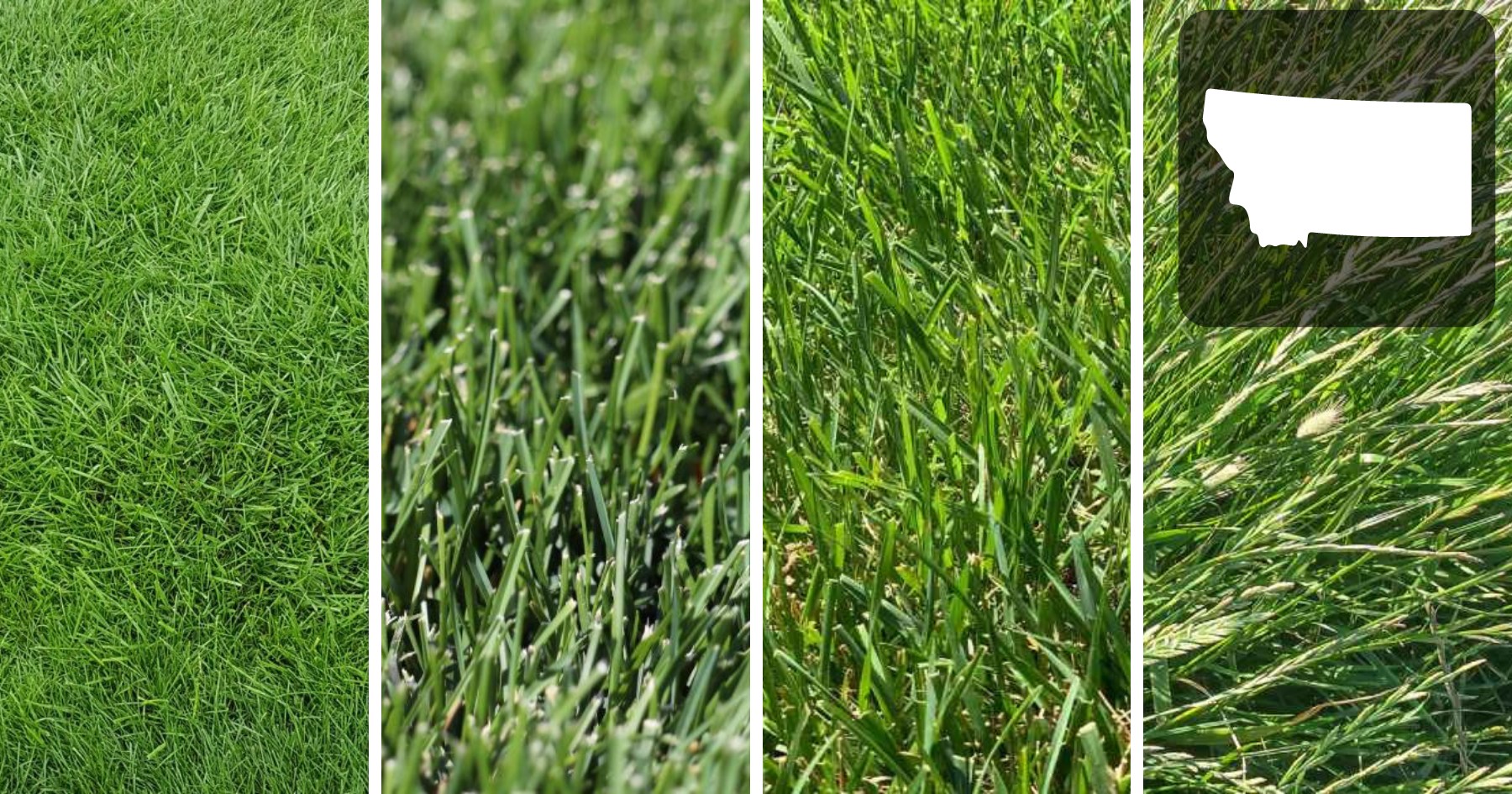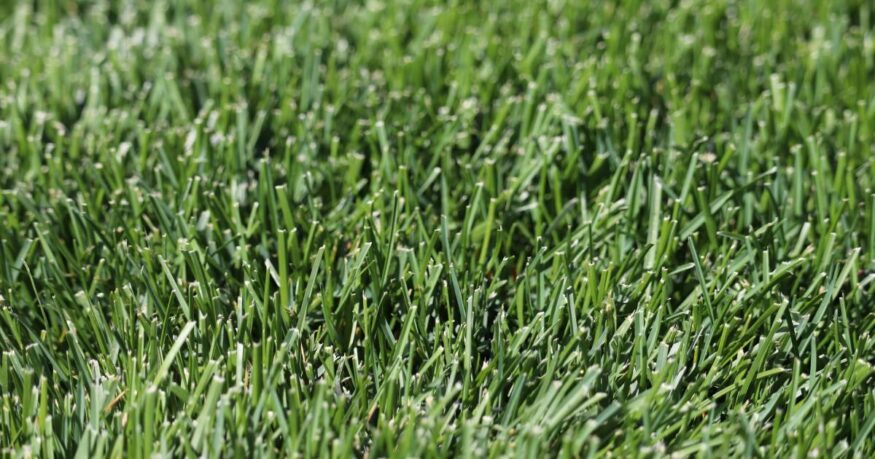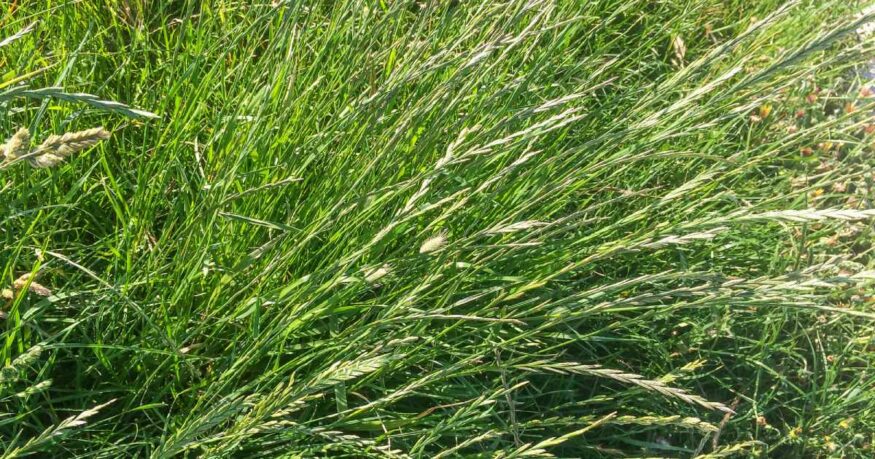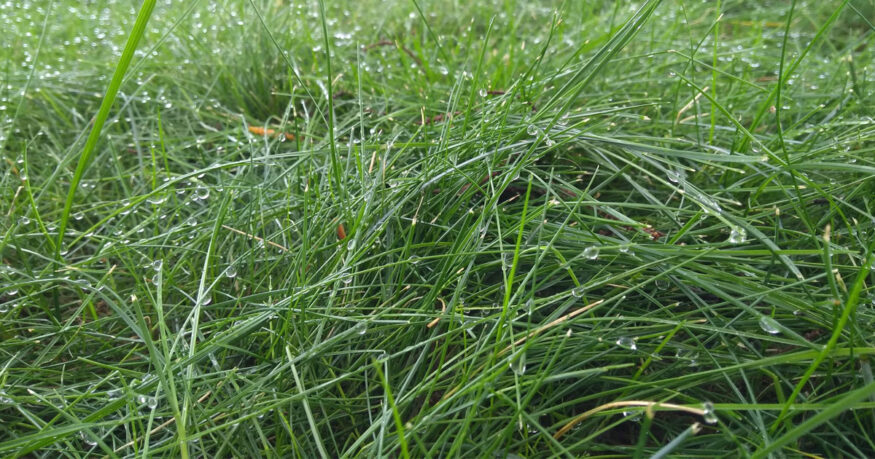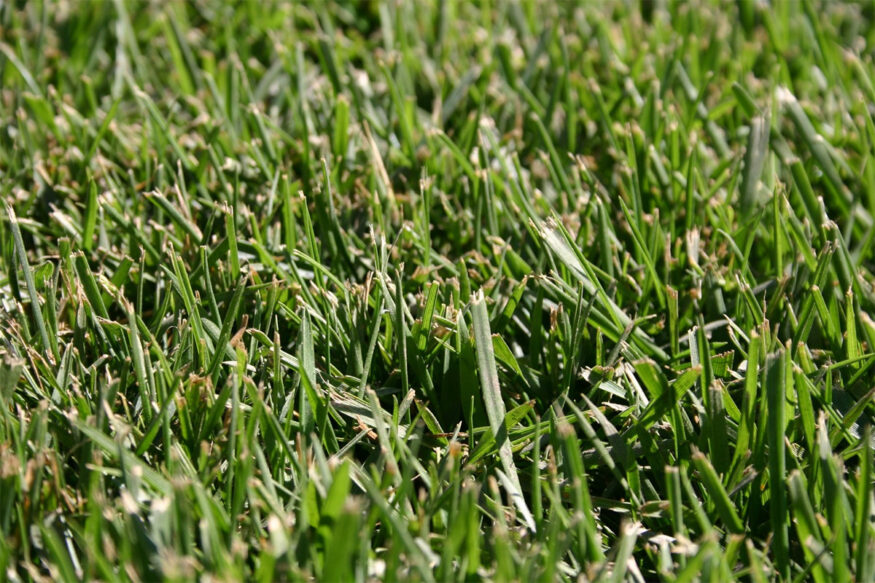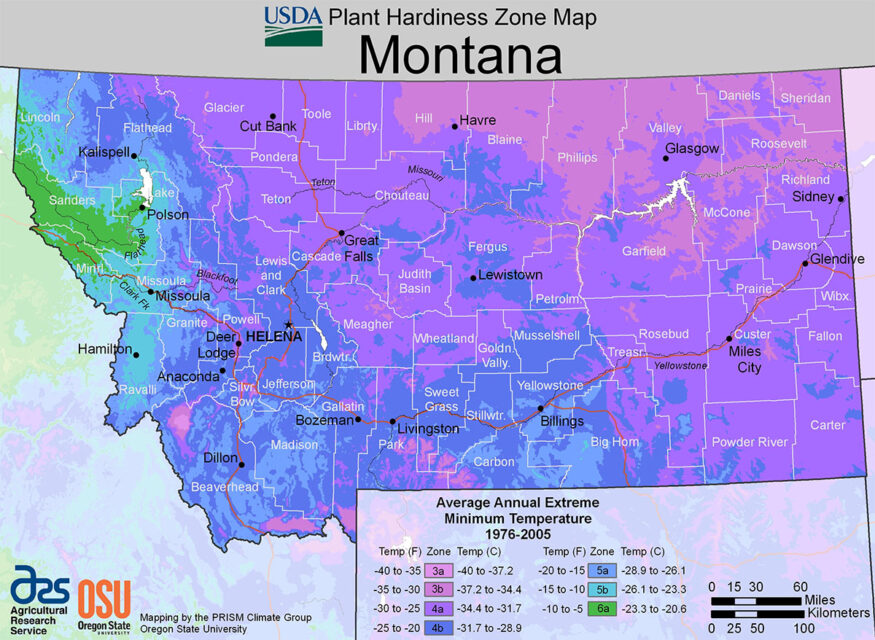Welcome, Montana homeowners! Are you on the hunt for the perfect grass seed to enhance your home’s landscape? Look no further than the hardy and adaptable Kentucky Bluegrass. However, Montana’s varied climate accommodates several other great grass seed options as well. With its awe-inspiring mountains and sprawling plains, Montana presents a unique set of challenges for those of us with a green thumb.
Climate zones throughout the state fluctuate wildly, extreme temperatures are a norm, and the unique soil composition can make it tricky to select the right grass seed.
Whether your region experiences the cooler climates of Western Montana or leans towards the warmer climes of the Southwest, rest assured there’s a grass seed out there ideally suited for your lawn. So, let’s journey together into the fascinating world of Montana turfgrasses and discover the perfect seed for your outdoor oasis!
Article Summary:
- Kentucky Bluegrass: This grass is a popular choice for Montana due to its hardiness and adaptability. It has a deep root system that gives it impressive drought tolerance and a quick recovery rate from damage. However, it struggles in shade or overly wet conditions and requires regular mowing and watering.
- Perennial Ryegrass: This grass is fast-growing and serves as a nurse for slower growing species. It thrives in moderate summers and cool winters, and can grow in diverse soil types. However, it may require extra care during extreme weather conditions.
- Fine Fescue: This grass is known for its hardiness, versatility, and exceptional shade tolerance. It requires less frequent fertilization, irrigation, or mowing, making it a low-maintenance option. However, it may not be suitable for high-traffic areas due to its limited wear tolerance.
- Tall Fescue: This grass is hardy and can endure high-traffic yard activities. It has deep roots that enable it to withstand heat and drought. It is also resistant to brown patch, a common fungal disease. However, without regular overseeding, it may form clumps.
- Montana’s Climate and Soil Conditions: Montana’s distinct climate and varied soil conditions present certain challenges for growing lawns. However, with the right seed mix and proper lawn care practices, a thriving Montana lawn is attainable.
[ez-toc]
Looking for the best grass seed for your region?
Our smart lawn plans are designed to work perfectly with your local soil and climate conditions, without any of the toxic stuff.
Use the code EHG20 for an instant $20 discount!
- Personalized lawn care: Custom lawn plans based on soil analysis, climate data, and your specific lawn needs.
- Convenience with a conscience: Products that are not only easy to use but also safe for you, your pets, and the planet.
- Science-backed formulas: Bio-based formulas contain effective, natural ingredients like seaweed, molasses, and iron.
- Expert support: Get one-on-one guidance from a real person and rest easy with Sunday's satisfaction guarantee.
Kentucky Bluegrass
| Also Known As | Poa pratensis L. |
| Type of Grass | Cool season perennial |
| Optimal Zones | Northern cool season zone, transition zones |
| Root Structure | Shallow |
| Winter Hardiness | Excellent |
| Shade Tolerance | Poor to Good |
| Water Requirements | High |
| Drought Tolerance | Poor |
| Self Repair Capacity | Excellent |
| Overall Maintenance Requirements | High |
Why Kentucky Bluegrass is The Most Popular Choice For Montana
Having experienced growing conditions in Montana, I can tell you that selecting the right grass seed for your lawn can be quite a task. But, after years of trial and error, I’ve found Kentucky Bluegrass to be a winner. It’s not just the vibrant, dense carpet of blue-green it forms that’s appealing, but also its robust nature that can withstand Montana’s fluctuating weather.
Kentucky Bluegrass is particularly hardy due to its deep root system. This gives it an impressive drought tolerance and a quick recovery rate from damage. My lawn has seen its fair share of rough patches, but time and time again, this grass has proven resilient. It also has a wide soil tolerance. Although it thrives best in well-drained, fertile loam, I can vouch for its adaptability to varied soil conditions.
However, it’s not all smooth sailing with Kentucky Bluegrass. It tends to struggle in shade or overly wet conditions, becoming thin and patchy. I learnt this the hard way when I tried to grow it under my large oak tree. Also, despite being a favorite for Montana lawns, it’s not a native species and may displace local prairie species if it spreads to natural grasslands.
Maintaining a Kentucky Bluegrass lawn does demand some time and effort. Regular mowing to maintain a 2 to 3-inch height is essential, as I’ve found through my own experience. It also needs frequent watering during dry spells, and a touch of annual fertilization in spring and fall can do wonders for its color and vigor.
So for my fellow Montanans wondering about the best grass seed for their lawns, I recommend Kentucky Bluegrass. Its care may require a bit more attention than other varieties, but the reward of a lush, resilient lawn is well worth it.
Learn More: Read our comprehensive state-by-state grass selection guides here.
Perennial Ryegrass
| Also Known As | Lolium perenne L. |
| Type of Grass | Cool season perennial |
| Optimal Zones | Mild northern zones |
| Root Structure | Deep |
| Winter Hardiness | Good to excellent |
| Shade Tolerance | Moderate |
| Water Requirements | High |
| Drought Tolerance | Good |
| Self Repair Capacity | Excellent wear tolerance |
| Overall Maintenance Requirements | Moderate to high |
What Makes Perennial Ryegrass A Great Grass For Montana
This grass is a favorite among many Montana homeowners, and rightly so. Among the fastest growing grasses, it’s perfect for those aiming to sprout a lush lawn in record time.
What makes Perennial Ryegrass even more appealing is its capacity to serve as a nurse for slower growing species. This means it can hold its own against common weeds, ensuring your lawn remains pristine. Plus, it’s a fantastic deterrent against topsoil erosion, a key feature for those residing in hilly areas.
Montana’s climate is a perfect fit for Perennial Ryegrass. It thrives best in moderate summers and cool winters, exactly what Montana offers. Whether your yard is bathed in sunlight or partially shaded, this adaptable grass will feel right at home.
As for soil, Perennial Ryegrass isn’t too fussy. It can grow in diverse soil types, although it has a slight preference for well-drained, fertile ones. Regular watering, especially during its first year and during hotter or drier periods, will see it flourish.
Remember, mowing is crucial! Keep your Perennial Ryegrass at a height of 2 to 3 inches. Leaving clippings on the lawn acts as a natural fertilizer, boosting your grass’s health and vigor. For an added boost, occasional fertilization with a balanced mixture of nitrogen, phosphorus, and potassium is advised, particularly in spring and fall.
However, be aware that Perennial Ryegrass may require extra care during extreme weather conditions. It isn’t particularly cold or drought resistant, so additional protection or watering may be needed during harsh Montana winters or dry spells. Be vigilant for diseases like rust, leaf spot, and crown rot.
If you’re seeking the ideal grass seed for your Montana lawn, Perennial Ryegrass is a worthy contender. With its rapid growth, adaptability, and relatively easy maintenance, it’s a choice that promises excellent results for your lawn.
Looking for the best grass seed for your region?
Our smart lawn plans are designed to work perfectly with your local soil and climate conditions, without any of the toxic stuff.
Use the code EHG20 for an instant $20 discount!
- Personalized lawn care: Custom lawn plans based on soil analysis, climate data, and your specific lawn needs.
- Convenience with a conscience: Products that are not only easy to use but also safe for you, your pets, and the planet.
- Science-backed formulas: Bio-based formulas contain effective, natural ingredients like seaweed, molasses, and iron.
- Expert support: Get one-on-one guidance from a real person and rest easy with Sunday's satisfaction guarantee.
Fine Fescue
| Also Known As | Hard fescue, strong creeping red fescue, slender creeping red fescue, sheep fescue, chewings fescue; Festuca L. |
| Type of Grass | Cool season perennial |
| Optimal Zones | Northern zones |
| Root Structure | Medium |
| Winter Hardiness | Excellent |
| Shade Tolerance | Excellent |
| Water Requirements | Medium to High |
| Drought Tolerance | Excellent |
| Self Repair Capacity | Limited |
| Overall Maintenance Requirements | Low |
Why Fine Fescue Grows well in Montana
This cool-season grass has been gaining popularity for its hardiness and versatility, capable of thriving through the state’s cold winters and hot summers.
What differentiates Fine Fescue from other grasses, such as bentgrass, buffalograss, or zoysiagrass, is its exceptional shade tolerance. Unlike its competition, Fine Fescue thrives even in less sunny areas, making it an ideal option for those tricky shady spots in your lawn.
It’s not just shade tolerance that puts Fine Fescue on the pedestal. This resilient breed takes to a range of soils, including Montana’s Scobey soil—a fine sandy loam characterized by low organic matter. This adaptability is a trait few other grass seeds can claim.
While cost-effective alternatives like oniongrass, quackgrass, cheatgrass, wheatgrass, cordgrass, or even ryegrass seed mixes are available, Fine Fescue offers a low-maintenance solution. This grass keeps your time and effort to a minimum, requiring less frequent fertilization, irrigation, or mowing. If you prefer enjoying your lawn over endless upkeep, Fine Fescue is your go-to choice!
But it’s not just about looks and low maintenance. Fine Fescue is a tough contender when it comes to drought resistance. Once established, it survives with minimal water, a trait that makes it a favorite in Montana, where water can sometimes be a luxury.
However, Fine Fescue isn’t without its shortcomings. It may not be your best bet for high-traffic areas or sports fields due to its limited wear tolerance. Plus, it’s prone to diseases like red thread, dollar spot, and brown patch if overwatered or overfertilized. But with proper care, these can be easily managed.
When it comes to sowing Fine Fescue, the best time is early spring or fall when the soil temperature is between 50°F and 65°F. For optimal results, sprinkle 3 to 5 pounds of seeds per 1000 square feet, covering them lightly with soil or mulch.
Once established, maintain a height of 2 to 3 inches when mowing, leaving the clippings on the lawn to nourish the soil. A once or twice-yearly feed of slow-release nitrogen fertilizer is all it needs, along with watering once or twice a week, weather permitting. Weed control is also minimal, often requiring just hand-pulling or selective herbicides safe for Fine Fescue.
In your quest for the perfect grass for your Montana lawn, Fine Fescue stands out with its adaptability, low maintenance, and resilience. And with a little TLC, this grass will transform your lawn into a lush, green oasis.
Tall fescue
| Also Known As | Lolium arundinaceum (formerly Festuca arundinacea) |
| Type of Grass | Cool season perennial |
| Optimal Zones | Northern through transition zones |
| Root Structure | Deep |
| Winter Hardiness | Excellent |
| Shade Tolerance | High |
| Water Requirements | Medium to High |
| Drought Tolerance | Excellent |
| Self Repair Capacity | Limited |
| Overall Maintenance Requirements | Low |
Why Tall Fescue Is a Popular Grass seed Choice
This hardy, bunch-type grass can endure high-traffic yard activities, making it perfect for homes with kids or pets. Plus, it’s relatively low-maintenance, freeing up your weekends to enjoy the yard, not just work in it.
One of the standout features of tall fescue is its deep roots. These roots enable it to withstand heat and drought, which makes it an excellent choice for both eastern and western Montana’s dry conditions. While grasses like bentgrass, buffalograss or zoysiagrass may struggle, tall fescue thrives in Montana’s sometimes harsh climate.
Moreover, this turfgrass is resistant to brown patch, a common fungal disease that can devastate many cool-season grasses. So, you can bid adieu to those unattractive spots marring your lawn’s beauty.
Planting grass seed requires precision timing. In Montana, the ideal times to sow your tall fescue seeds are early spring or fall, when soil temperatures range between 50°F and 65°F. And the best part? You only need about 6 to 8 pounds of seed per 1000 square feet.
Maintaining your tall fescue lawn is a breeze once it’s established. Mow it to a height of 3 to 4 inches, and leave the clippings to act as a natural fertilizer. Water it deeply – about 1 inch per week should suffice – to encourage the roots to grow deep. A balanced 10-10-10 fertilizer in the fall will keep it healthy and lush.
However, tall fescue isn’t flawless. Without regular overseeding, it may form clumps. Its coarse texture may also make it stand out amongst other grasses. In areas with extreme cold or poor snow cover, it could be prone to winter injury.
All in all, for a Montana lawn, tall fescue makes an excellent choice. It’s resilient, durable, and well-suited to the state’s climate. With a little care and maintenance, your tall fescue lawn could be the neighborhood’s envy. So, why not give it a shot? You might just discover that tall fescue is the perfect match for your Montana lawn.
Montana’s Climate And Growing Challenges For Lawns
Montana’s distinct climate plays a crucial role in determining the best grass seeds for your lawn. The state is known for its four unique seasons, each bringing its own challenges for grass growth. When spring arrives, your primary task is to prep your lawn for the growth season.
This process may entail seeding or overseeding your lawn, employing grass species that flourish in Montana’s diverse weather patterns.
Deciphering Soil Conditions
Another hurdle for growing lawns in Montana is navigating the state’s varied soil conditions. Montana boasts a range of soil types including clay, loam, and sand. Clay soil, though rich in nutrients, is prone to compaction and drains poorly, making it less than ideal for grass growth. Conversely, loam and sandy soils tend to be more conducive to grass species such as Kentucky bluegrass and fine fescues.
Mastering Growth Challenges
Despite these hurdles, a thriving Montana lawn is attainable with the right seed mix. Seeding or overseeding with a blend of grass species like Kentucky bluegrass, ryegrass, and fine fescues can yield impressive results. Furthermore, maintaining your lawn’s height and supplying adequate water and fertilization can give your grass a growth boost.
In summary, while Montana’s climate and soil conditions present certain challenges, selecting the right grass seeds and adhering to proper lawn care practices can result in a lush, healthy lawn. With some diligent research and e
Looking for the best grass seed for your region?
Our smart lawn plans are designed to work perfectly with your local soil and climate conditions, without any of the toxic stuff.
Use the code EHG20 for an instant $20 discount!
- Personalized lawn care: Custom lawn plans based on soil analysis, climate data, and your specific lawn needs.
- Convenience with a conscience: Products that are not only easy to use but also safe for you, your pets, and the planet.
- Science-backed formulas: Bio-based formulas contain effective, natural ingredients like seaweed, molasses, and iron.
- Expert support: Get one-on-one guidance from a real person and rest easy with Sunday's satisfaction guarantee.
Frequently Asked Questions
What are the best grass types for Montana?
The best grass types for Montana are cool-season varieties suitable for the semi-arid climate and harsh winters of the Treasure State. Some of the best cool-season grass types for Montana include Kentucky Bluegrass, Fine Fescue, Tall Fescue, Perennial Ryegrass, Crested Wheatgrass, Streambank Wheatgrass, and Smooth Bromegrass.
What makes Kentucky Bluegrass one of the best grasses for Montana?
Among the cold-season grasses to choose from, Kentucky bluegrass is one of the best due to its hardiness and deep green color.
Are there any warm-season grasses that grow well in Montana?
Two warm-season grasses: Buffalo and Blue Grama, do well in many areas of Montana featuring lower altitudes and hot, dry summers. These fine-bladed grasses are very drought tolerant.
